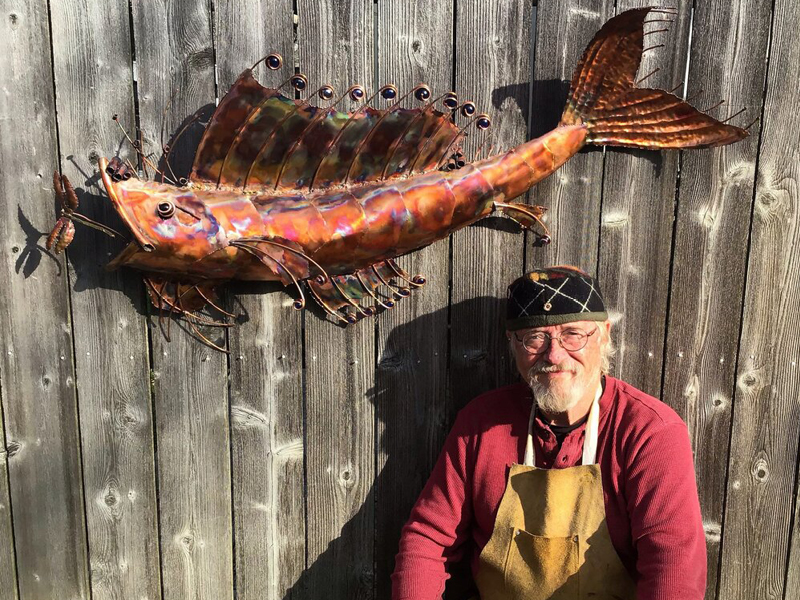By Lisa Tang
Graceful objets de art by Randolph Martin spin gracefully in the wind and create the illusion of flying in the air or floating on the sea. He attaches metal bats, dragons, mermaids, ravens, sailboats, and dragonflies to a steel bearing that allows the kinetic sculptures to turn gently in the breeze.
The mystic spinning figures add a relaxing ambiance to outdoor settings and are popular among Martin’s many clients.
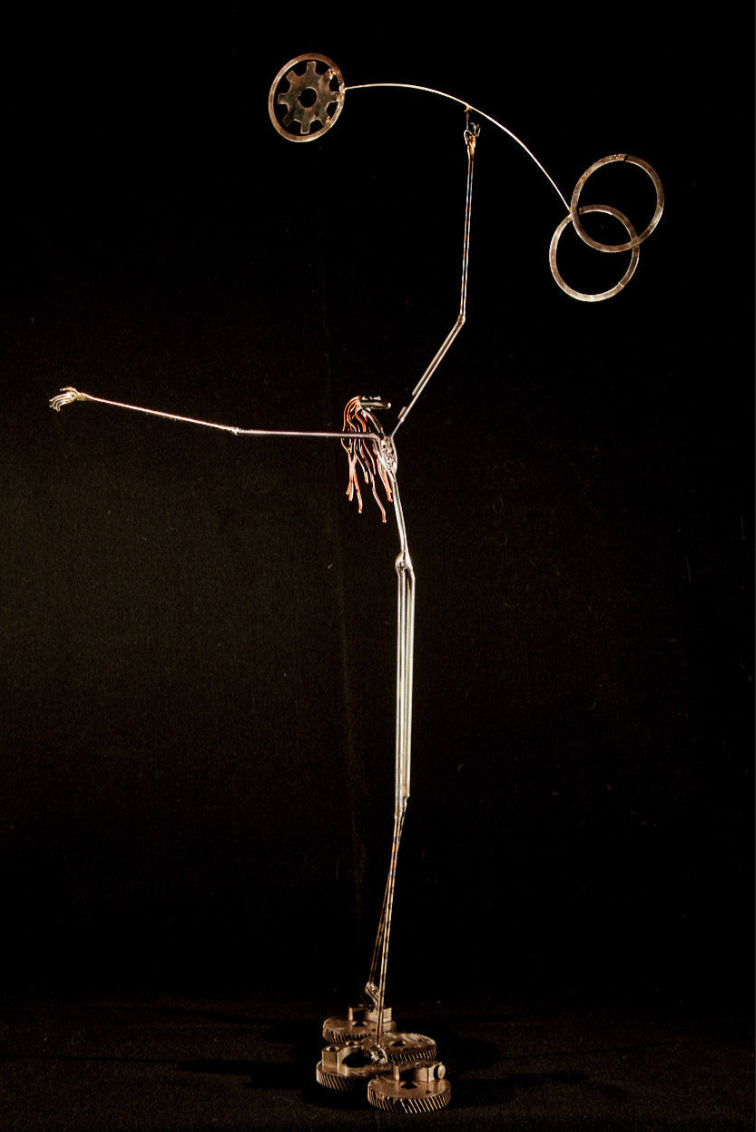
A metal statue balances a moving set of circles from a tiny point, a signature operation of Martin’s work. Photo by Craig D. Blackmon, FAIA
In spring and summer people snap up Martin’s creations at art shows and online almost faster than he can produce them. Welding and fashioning the sculptures is hard work that he enjoys.
“I like the odd and the unusual. People see them and it makes them smile and they like to see them moving in the wind,” Martin says. “I build [the sculptures] to suit me and it just so happens I’ve built a good sized clientele that enjoy them too.”
Martin’s works have been displayed in museums and galleries, including the Longview Museum of Fine Arts, the Main Street Gallery in Tyler, and the Edom Art Emporium. When possible, he prefers selling them at art shows like the Edom Art Festival in October, the Scarborough Renaissance Festival in Waxahachie in April, and the Rockport Art Fest in July.
“They love my copper because salt water and copper turns a beautiful green and lasts for many, many years,” he says of clients at the art sale in Rockport on the Gulf Coast.
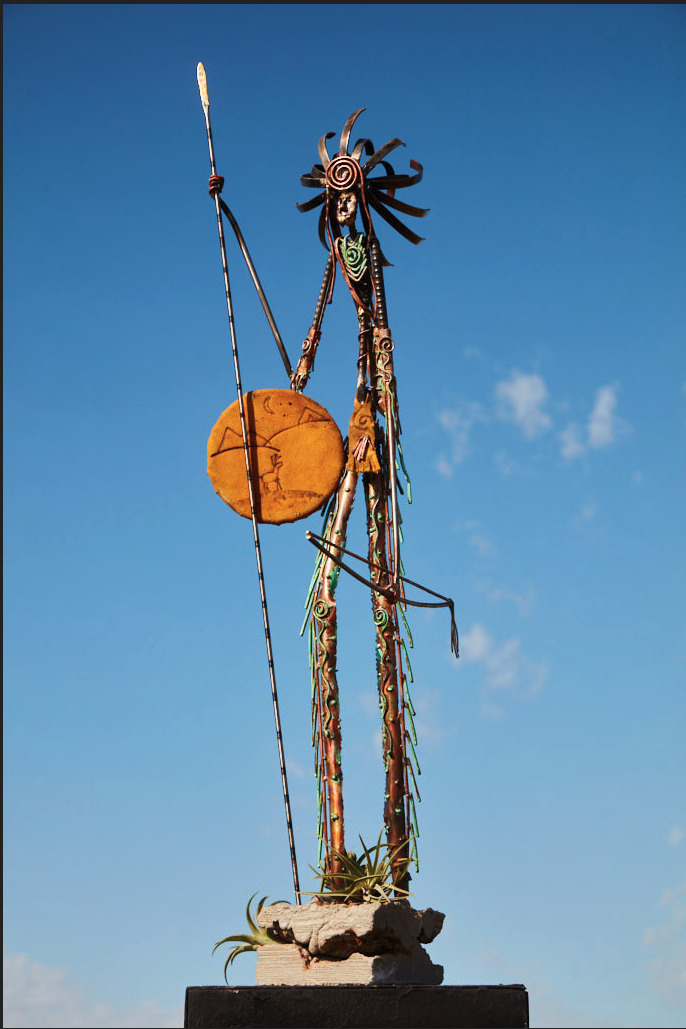
Photo by Craig D. Blackmon, FAIA
Some of his favorite projects are large fish sculptures of three to five feet that drift elegantly in the air.
“The reason I like to [sculpt] fish is because no matter how it ends up looking it looks similar to something that really does exist deep down in the ocean,” Martin says. “Fish can be really weird and odd.”
Martin works almost exclusively with copper because of its aesthetic qualities and malleability.
“Copper is a wonderful material. I can torch-cut it on the edge that makes it look rough and bubbly that gives it a handmade look.”
The copper sculptures turn black during welding so Martin cleans them with a wire brush then runs a flame over them to add a stunning rainbow effect.
“The copper does so much more work than just being a material. It’s fantastic,” Martin says. “When I want it to be green I acid wash it to force it to do the rusting so you get all the funky green crusty effects.”
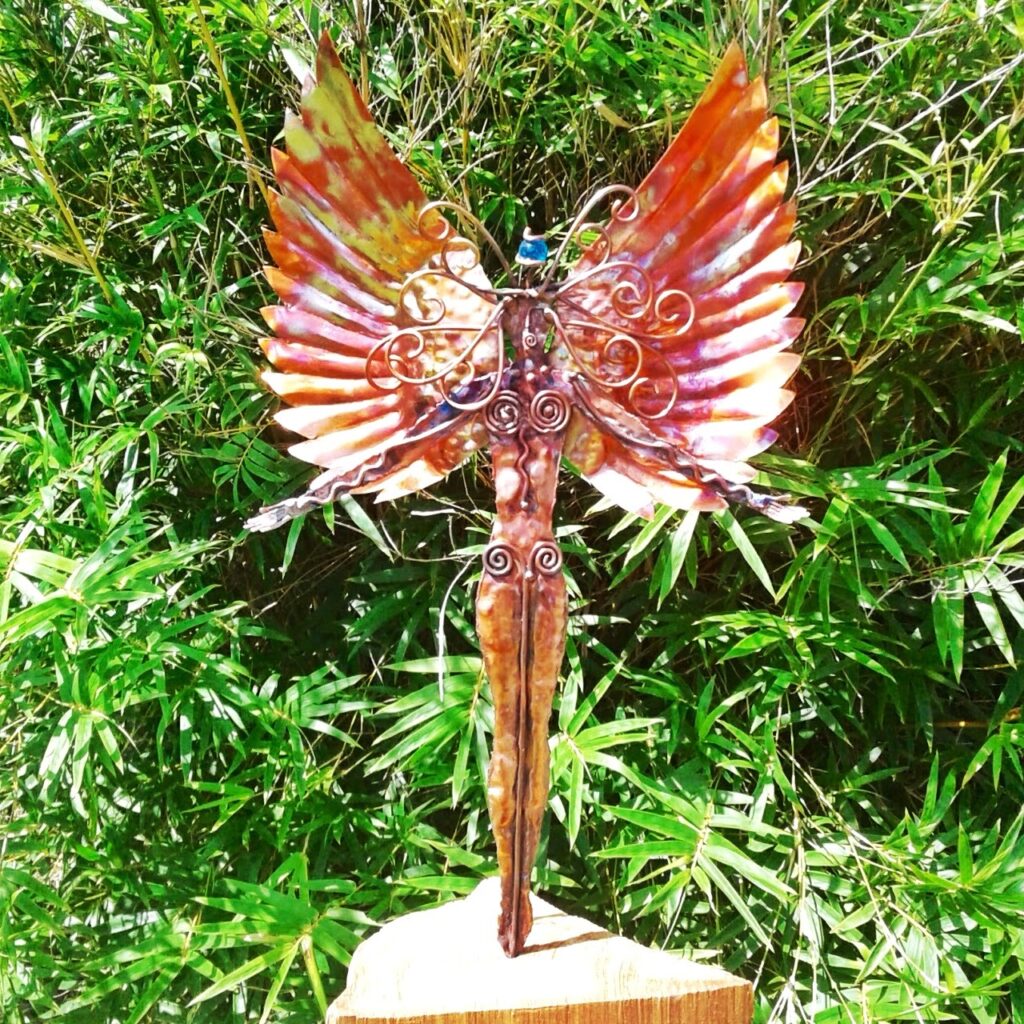
Photo by Craig D. Blackmon, FAIA
Rising prices and limited supply are two factors that currently affect his production. The price of copper rose recently and drove up the price of Martin’s smaller sculptures from $40 to $60. A copper supplier warned it would be months before another shipment arrived so Martin borrowed money from friends to buy enough copper to use through July.
Though many of his sculptures are fish, Martin does not fish as a hobby and says it’s too slow for his liking but he does enjoy eating a fish sandwich now and then.
The ocean is never far from his spirit. Martin remembers working on the open sea while serving in the Coast Guard in Alaska’s Aleutian islands during the Vietnam era. He recalls Alaska’s beauty fondly.
“We did oceanographics and chased Russian ships,” Martin says. “Alaska — that was an amazing place.”
Martin followed other callings before finding his niche as a sculptor of fish and mystic creatures.
He worked in food distribution for almost 20 years but after Southland Corporation sold its grocery distribution to McClain’s more than 30 years ago, Martin found himself unemployed.
Upon his wife Sherri’s request, he began building birdhouses and was soon selling them at First Monday Trade Days in Canton. The birdhouses sold so well that he eventually employed seven people and his designs appeared in Southern Living Magazine and he was featured on Texas Country Reporter.
The success didn’t last though. Martin started developing sinus headaches from working with cedar wood used in the birdhouses. A bout with colon cancer finally led him to give up the business.
What seemed like an unfortunate pause led to new artistic discoveries. Martin experimented with different materials and created objects that pleased him.
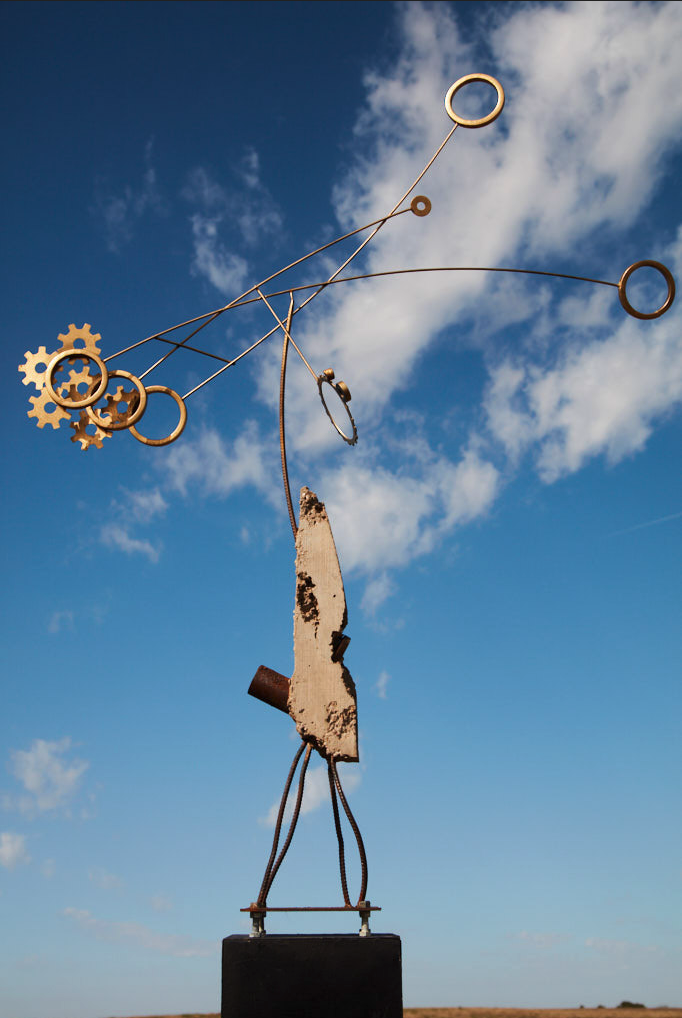
Photo by Craig D. Blackmon, FAIA
He fashioned shamans of copper holding long fishing poles or spears and mystic creatures of various found objects such as leather, steel gears and springs, and bones. He became an artist.
“It seems to me the whole journey of my life — which a lot of it was struggling to find my place — was a hard journey until I turned 43,” Martin says. “Then that’s when I started doing what I’m doing now, and now I feel like a complete person. I’ve never been happier.”
Martin also enjoys educating the general public about his art. He offers classes at the Edom Art Emporium where he patiently teaches clients how to sculpt copper bats or lilies. Classes are held on Sunday afternoons but can be arranged at other times.
He teaches his skills to generate greater appreciation for his creations.
“[Art is] not just simply a quick little thing that you do and sit back and collect money,” Martin says. “It is hard work, lots and lots of practice, classes that you take from other people. You study and practice. I think it’s important for people to understand that the hard work that artists do needs to be appreciated.”
Martin gives Sherri credit for his success. An artist in her own right, she retired several years ago and now helps support his growing demand.
Now that Martin is doing what he really enjoys he has no plans to retire.
“I will do this until I can’t anymore,” Martin says. “I’m 69 and I would not be happy if I stopped doing this. I wouldn’t know what to do with myself so I’ll do it until I’m not physically able anymore.”
To see Martin’s art in person visit Blue Moon Gardens in Edom, and buy online on www.artbyrandolphwmartin.com.

